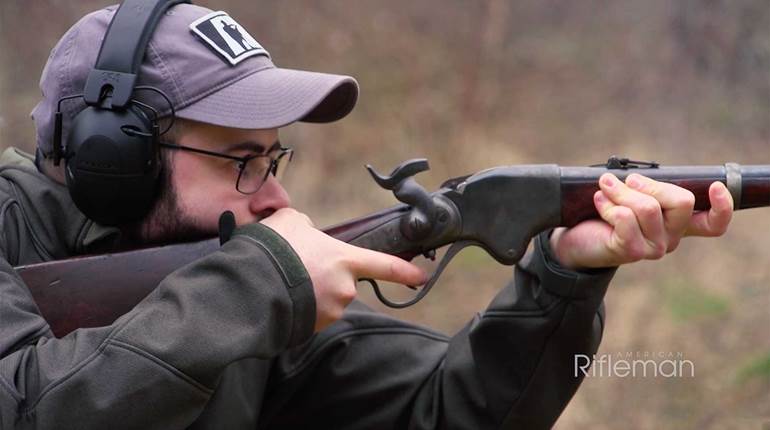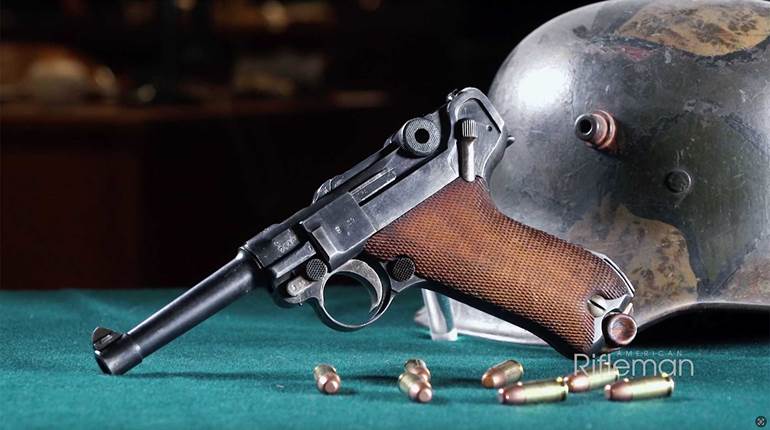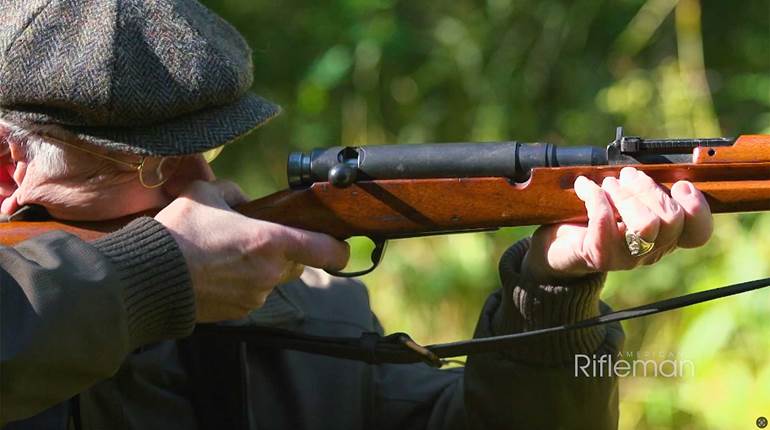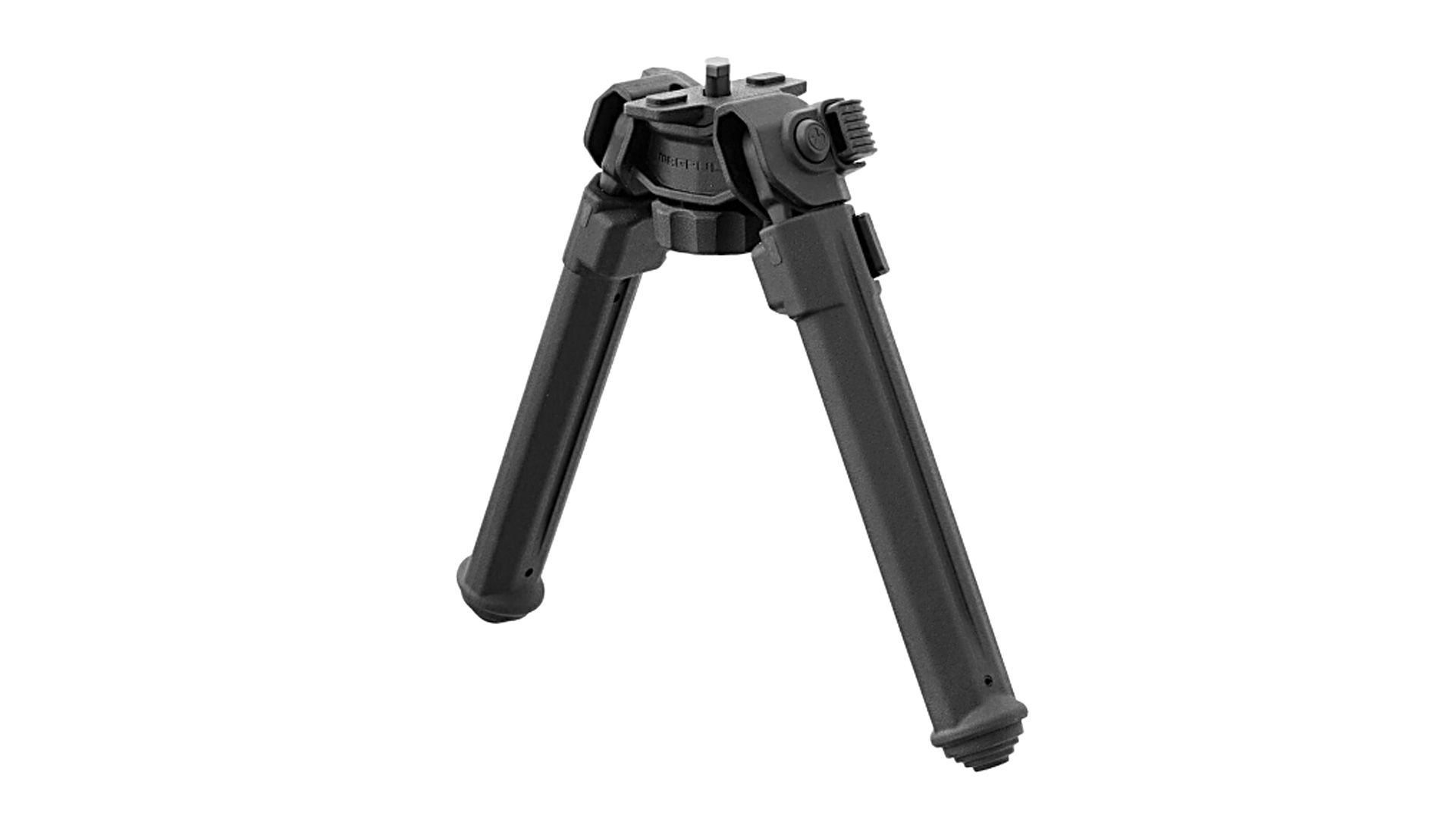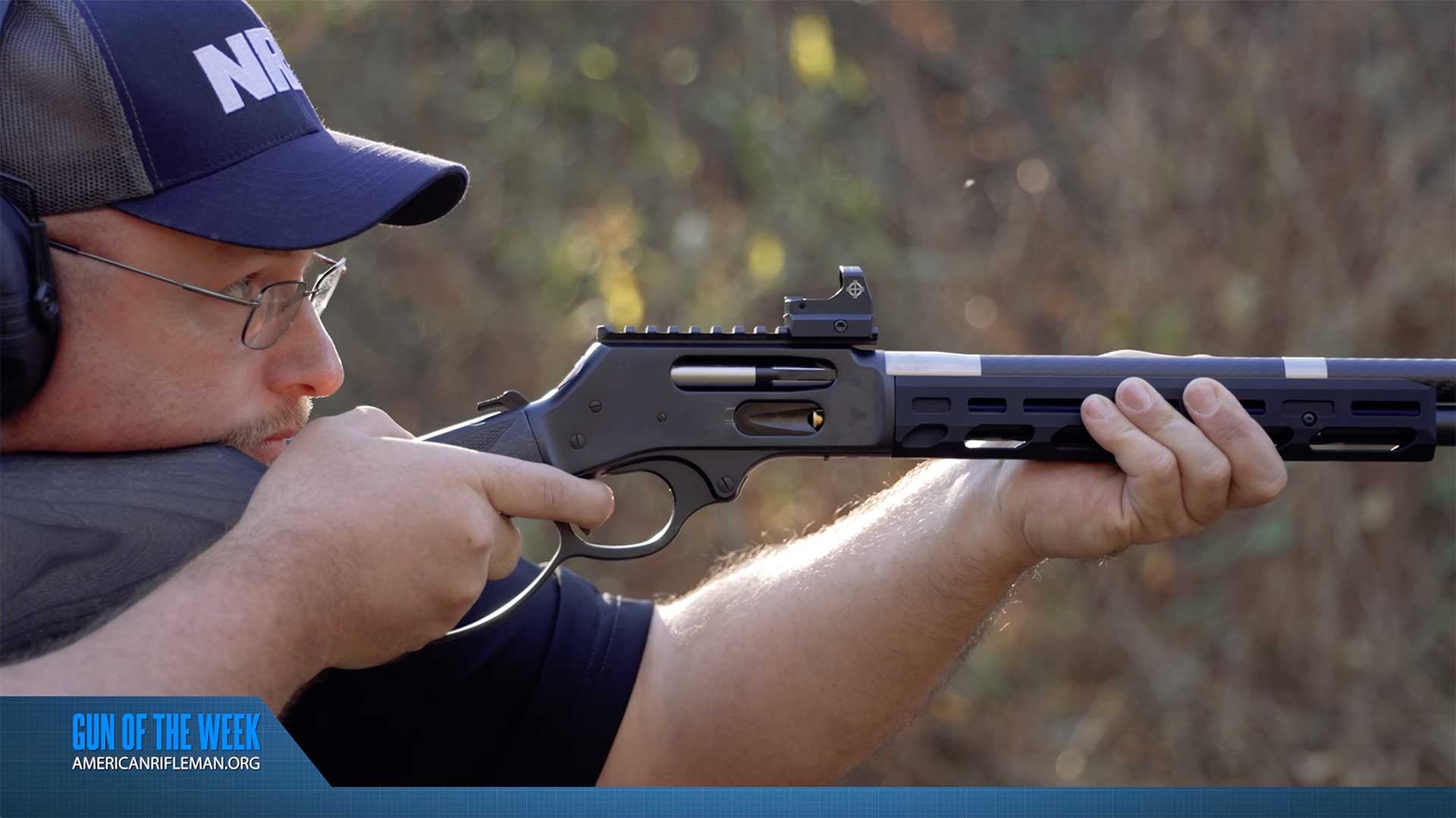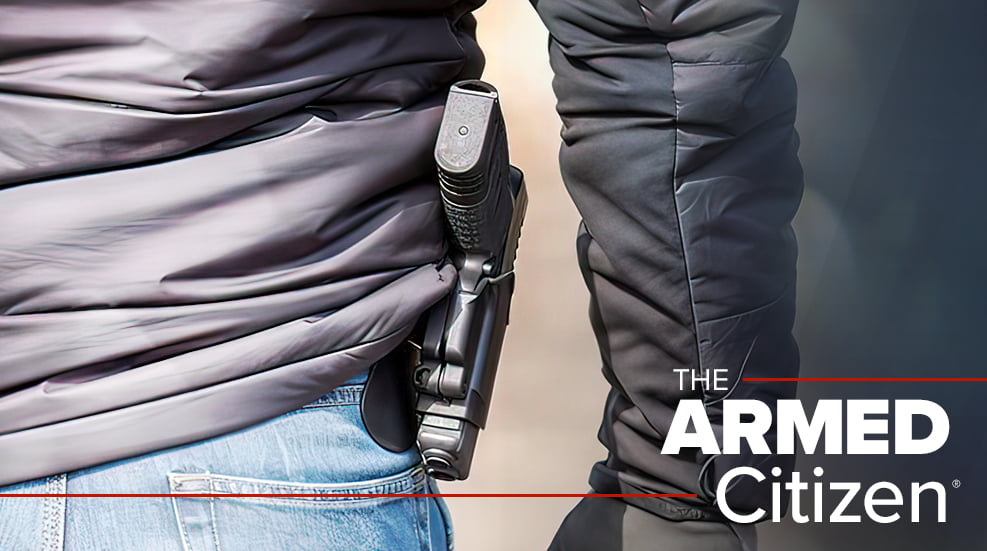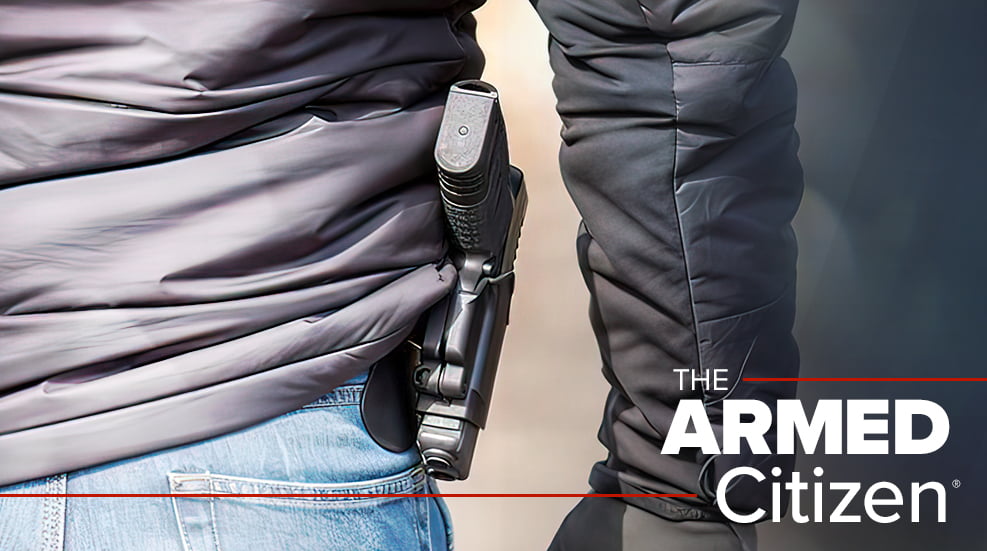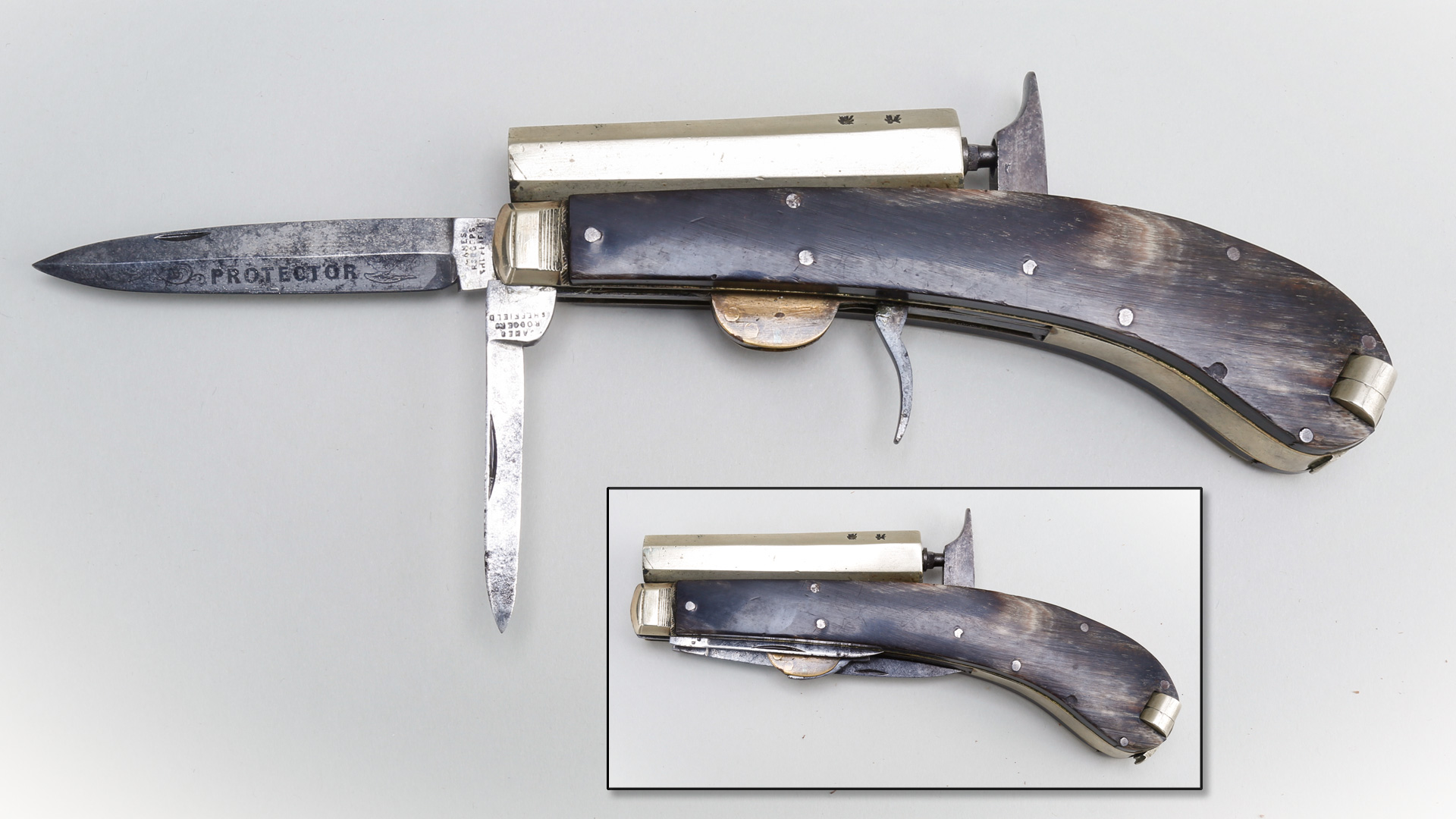
The old saw “never bring a knife to a gun fight” is somewhat moot when one is armed with a Rodgers knife pistol—a clever percussion-fired defensive arm composed of both blades and barrel. To be sure, by the mid-19th century when this particular piece made its appearance, combination arms were nothing new. The concept harkened back at least 300 years when daggers, swords, shields, truncheons, axes and the like were offered with single or multiple barrels and matchlock or wheellock mechanisms designed to give the wielder an edge over his opponent.
How useful these contrivances were is questionable. Many surviving examples appear to fall more into the novelty category rather than actually being practical for serious combat. The subsequent development of the simpler flintlock and percussion systems changed this perception, however, allowing makers to develop smaller, more reliable, multiple-use arms.
 One of the most successful and long-lived combos, a handy two-bladed percussion knife pistol, was the product of Unwin & Rodgers, a cutlery firm in Sheffield, England. This establishment had been founded by James Rodgers as James Rodgers & Co., likely in the 1810s. Shortly thereafter, he was joined by pen-knife maker Philip Unwin, and, by the late 1820s, the new firm of Unwin & Rodgers was advertising a line of small knives and assorted sundries.
One of the most successful and long-lived combos, a handy two-bladed percussion knife pistol, was the product of Unwin & Rodgers, a cutlery firm in Sheffield, England. This establishment had been founded by James Rodgers as James Rodgers & Co., likely in the 1810s. Shortly thereafter, he was joined by pen-knife maker Philip Unwin, and, by the late 1820s, the new firm of Unwin & Rodgers was advertising a line of small knives and assorted sundries.
Unfortunately, their association was short-lived, with Rodgers dying in 1829. Undaunted, Unwin continued the business, moving into larger self-defense and hunting knives, considerable numbers of which were exported to the United States, where they found welcome employment on the American frontier and in the Civil War.
Unwin introduced a “Life and property Preserver” in 1839. This small percussion pistol incorporated a screw attachment that allowed it to be attached to a doorway, where it could be set up to discharge upon the entry of unwanted visitors, a practice that is wholly illegal today.
By the early 1840s, Unwin & Rodgers had expanded its line to include small and large knives, surgical instruments, spring knives and “pistol knives.” The latter became one of the company’s most popular offerings. Though they were available with a selection of embellishments, in general, the pistol, measuring some 6½" with blades folded, conformed to a particular pattern. Panels were commonly of plain horn, though checkered styles were also seen. The number of blades varied, though two, one measuring 3½" and the other 2½", was the most common format.
The top of the knife was mounted with a heavy 3-5⁄16" German-silver-plated, octagon, steel, smoothbore barrel with a percussion cap nipple at the center, rear. A single, manually cocked hammer was positioned at the midpoint of the knife body, behind the barrel. Interestingly, the tumbler was not fitted with a half-cock safety. The knife/gun’s trigger folded up out of the way when not in use. Calibers ranged from .25 to .32.
A relatively capacious compartment with lid was added to the butt to hold percussion caps. It was flanked on one side with a tweezer and on the other a bullet mold, these accessories cunningly positioned out of the way in configured grooves beneath the panels.
Blades were either plain or etched with several designs or mottos, one of the most common being the one seen here, “Self Protector.” Interestingly, Unwin, possibly as a tribute to his late partner, or perhaps for marketing purposes, only stamped Rodgers’ name on the blade.
The Rodgers percussion knife pistol achieved considerable popularity in its heyday and was commonly seen on both sides of the Atlantic. The author must admit to never having encountered a period reference to one being used in anger, but they were obviously thought of well enough to become one of Unwin & Rodgers’ most popular products. In fact, with the appearance of the self-contained cartridge, Unwin took advantage of this new technology and expanded the line by producing rimfire breechloading knife pistols.
The .30-cal. ”Self Protector” shown here is in fine condition and exhibits little sign of hard use. Most of the blade etching is still clear, and the barrel retains most of its original plating. Both tools are present, and the horn panels are sound and unblemished. As such, it is worth $2,950.
Gun: “Self Protector” Knife Pistol
Manufacturer: Unwin & Rodgers, Sheffield, England
Caliber: .30
Manufactured: c. 1860
Condition: NRA Fine (Antique Gun Standards)
Value: $2,950












